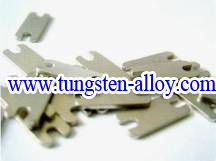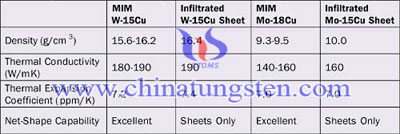
 Tungsten copper alloy high performance composites are fabricated from carefully controlled porous tungsten that is vacuum-infiltrated with molten copper. This results in a W/Cu composite that has high conductivity and a matched low thermal expansion, essential for heat sinks.
Tungsten copper alloy high performance composites are fabricated from carefully controlled porous tungsten that is vacuum-infiltrated with molten copper. This results in a W/Cu composite that has high conductivity and a matched low thermal expansion, essential for heat sinks.
Tungsten copper is a composite of tungsten and copper. By controlling the content of tungsten, we can design its coefficient of thermal expansion (CTE), matching that of the materials, such as Ceramics (Al2O3, BeO), Semiconductors (Si), Kovar, etc.
Tungsten copper heat sink uses tungsten copper alloy extended surfaces to increase the surface area in contact with the cooling medium, the air for example. The term is not meant literally, as tungsten copper heat sink does not have a "magical ability to absorb heat like a sponge and send it off to a parallel universe". Heat transfer theory helps explain practical aspects of how heat sinks work, and can help to clear up common misconceptions and design mistakes. Approach air velocity, choice of material, fin (or other protrusion) design and surface treatment are some of the design factors which influence the thermal resistance, i.e. thermal performance, of a tungsten copper heat sink.
One engineering application of tungsten copper heat sink is in the thermal management of electronics, often computer CPU or graphics processors. For these,tungsten copper heat sink attachment methods and thermal interface materials also influence the eventual junction or die temperature of the processor(s). Theoretical, experimental and numerical methods can be used to determine tungsten copper alloy heat sink's thermal performance.

If you have any interest in tungsten copper heat sink, please feel free to contact us by email: sales@chinatungsten.com or by phone: 0086 592 5129696.